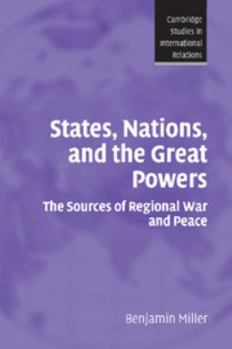States, Nations, and the Great Powers: The Sources of Regional War and Peace
Select Format
Select Condition 
Book Overview
Why are some regions prone to war while others remain at peace? What conditions cause regions to move from peace to war and vice versa? This book offers a novel theoretical explanation for the differences in levels of and transitions between war and peace. The author distinguishes between hot and cold outcomes, depending on intensity of the war or the peace, and then uses three key concepts (state, nation, and the international system) to argue that it is the specific balance between states and nations in different regions that determines the hot or warm outcomes: the lower the balance, the higher the war proneness of the region, while the higher the balance, the warmer the peace. The international systematic factors, for their part, affect only the cold outcomes of cold war and cold peace. The theory of regional war and peace developed in this book is examined through case-studies of the post-1945 Middle East, the Balkans and South America in the nineteenth and twentieth centuries, and post-1945 Western Europe. It uses comparative data from all regions and concludes by proposing ideas on how to promote peace in war-torn regions.
Format:Paperback
Language:English
ISBN:0521691613
ISBN13:9780521691611
Release Date:September 2007
Publisher:Cambridge University Press
Length:526 Pages
Weight:0.65 lbs.
Dimensions:1.3" x 5.9" x 9.0"
Customer Reviews
0 rating





